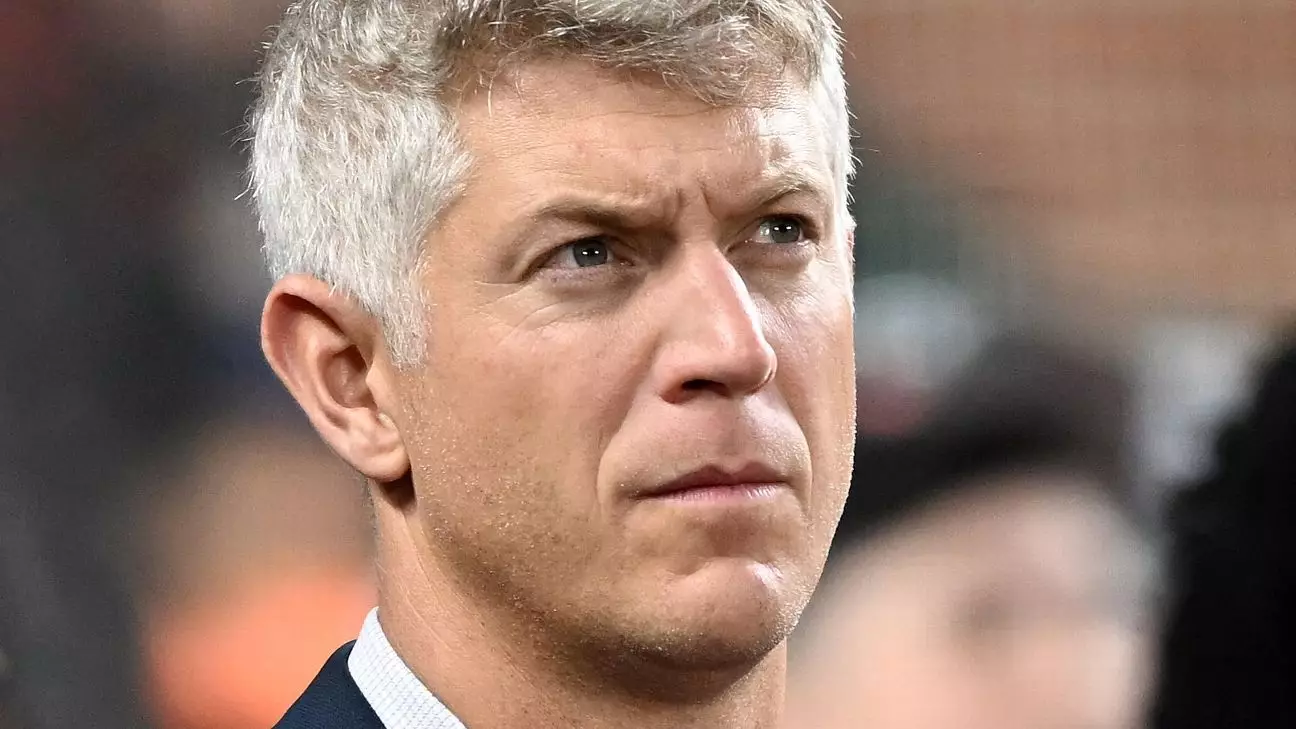For the Baltimore Orioles, the beginning of the 2024 season is proving to be a crucible, testing the mettle of a team that once basked in the glory of a 101-win campaign. Suddenly, the bright lights of contention have dimmed, and the Orioles find themselves in a precarious situation, grappling with a dismal 12-18 record. As general manager Mike Elias articulated, this season marks an unwelcome embrace with failure, setting the stage for a potential crisis in Birdland. The youthful core, which not long ago instilled terror among opponents, is now confronted with the stark reality of adversity.
This sense of struggle is not merely anecdotal; it is embedded in the statistics that reveal a sobering narrative. The Orioles stand at the bottom of the American League East and hold the most unfavorable run differential across the league. This suggests not just isolated hiccups, but deeper systemic issues that may be brewing below the surface.
Injury Woes Plaguing the Pitching Staff
Much of the Orioles’ plight can be traced back to a beleaguered pitching rotation, decimated by injuries to key players like Zach Eflin and Grayson Rodriguez. The starting staff, once buoyed by promising talent, has struggled significantly, leading to an alarming 5.47 ERA, which ranks among the worst in baseball. When the best-laid plans start to crumble, as they have this season, it becomes increasingly difficult for any team to compete.
In particular, the underwhelming performances from veterans Charlie Morton and Kyle Gibson raise serious questions about roster management strategies employed by Elias. One-year contracts often signify a safety net for front office decisions; however, the high expenditure here raises eyebrows. If these investments cannot be seen as productive in the long run, they may signify a gross misallocation of resources, undermining the financial framework the Orioles aim to build.
A Changing Dynamic in the Front Office
Elias’s openness about the team’s struggles showcases a degree of accountability that is refreshing in a sports culture often marked by finger-pointing. However, the reality remains that even with an injury-riddled roster, expectations were set high after the previous season’s success. The team’s management must act decisively; an overly patient approach in addressing these glaring issues might risk further decline.
Moreover, Elias appears unwavering in his support for manager Brandon Hyde, which could either be seen as a vote of confidence or an unwillingness to make necessary changes when performance dips. That said, it’s easy to argue that maintaining consistency is vital for the psychological framework of the team. With a plethora of talent yet showing a lackluster performance, the question arises: how much longer will Elias remain lenient while the team fails to recover?
The Role of Resilience and Growth
While the statistics and injuries tell a bleak story, the ever-optimistic Elias emphasizes that recovery hinges on incremental improvements and collective growth. The narrative around the team should shift focus from immediate results to fostering resilience in the face of adversity. Upholding faith in their capabilities will be essential as players like Eflin, with a lat strain, and Rodriguez, suffering from elbow inflammation, inch closer to recuperation.
Continual conversations between Elias and Hyde reflect an engaged front office, seeking solutions rather than succumbing to outward despair. However, it raises the question of whether this hands-on approach is capable of revitalizing a youthful roster that may be reeling from unexpected challenges. Given the characteristics of a young team—fluctuating identities and confidence—the importance of strong leadership during tumultuous times cannot be overstated.
Transformational Decisions Ahead
The upcoming decisions will prove pivotal for the Orioles’ trajectory. The balance between investing in immediate fixes or fostering a long-term vision is delicate. It will be interesting to observe whether Elias and Hyde pivot to bolster their pitching staff creatively, or if they remain steadfast, relying on the eventual return of injured players and maintaining the integrity of their original plan.
As the season unfolds, Baltimore must embrace the reality of its circumstances. The image of a triumphant team competing at the highest level appears bruised but remains salvageable through strategic adjustments and collective resolve. With all eyes on them, the Orioles’ journey through adversity may redefine their character—a path that could either lead to a resurgence or deeper challenges as the season advances.

